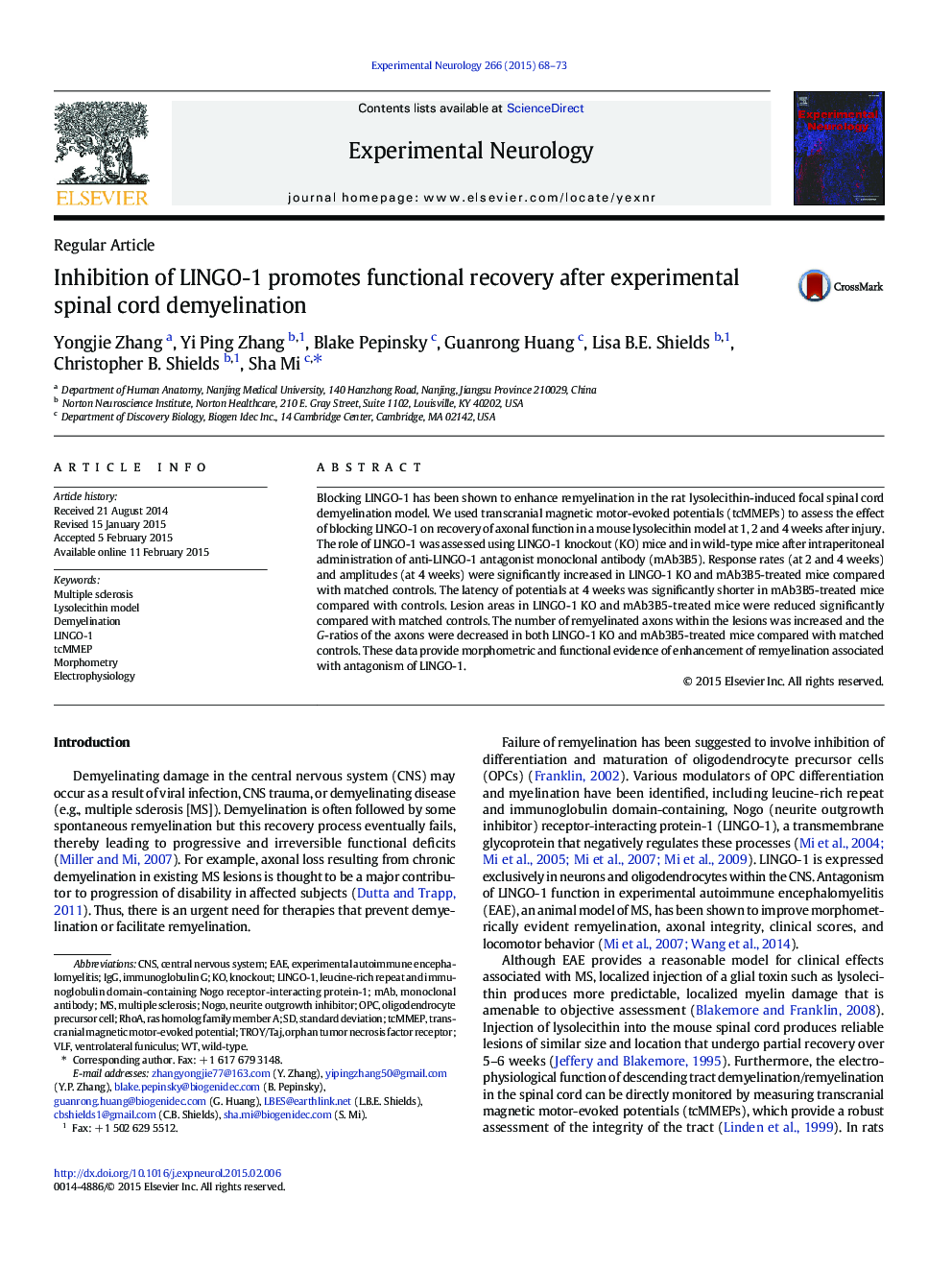| Article ID | Journal | Published Year | Pages | File Type |
|---|---|---|---|---|
| 6017440 | Experimental Neurology | 2015 | 6 Pages |
â¢We assessed effects of blocking LINGO-1 on mouse spinal cord demyelinated lesions.â¢Blocking LINGO-1 (gene knock-out, anti-LINGO-1 mAb) improved axon function.â¢Morphometrically evident remyelination was also improved by blocking LINGO-1.â¢This supports the potential for blocking LINGO-1 as a strategy to enhance recovery.
Blocking LINGO-1 has been shown to enhance remyelination in the rat lysolecithin-induced focal spinal cord demyelination model. We used transcranial magnetic motor-evoked potentials (tcMMEPs) to assess the effect of blocking LINGO-1 on recovery of axonal function in a mouse lysolecithin model at 1, 2 and 4Â weeks after injury. The role of LINGO-1 was assessed using LINGO-1 knockout (KO) mice and in wild-type mice after intraperitoneal administration of anti-LINGO-1 antagonist monoclonal antibody (mAb3B5). Response rates (at 2 and 4Â weeks) and amplitudes (at 4Â weeks) were significantly increased in LINGO-1 KO and mAb3B5-treated mice compared with matched controls. The latency of potentials at 4Â weeks was significantly shorter in mAb3B5-treated mice compared with controls. Lesion areas in LINGO-1 KO and mAb3B5-treated mice were reduced significantly compared with matched controls. The number of remyelinated axons within the lesions was increased and the G-ratios of the axons were decreased in both LINGO-1 KO and mAb3B5-treated mice compared with matched controls. These data provide morphometric and functional evidence of enhancement of remyelination associated with antagonism of LINGO-1.
